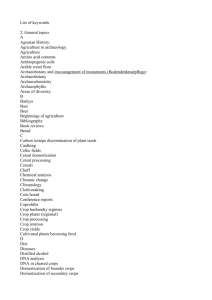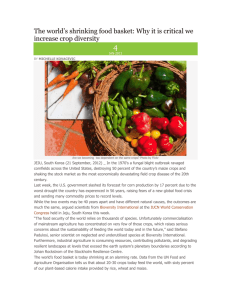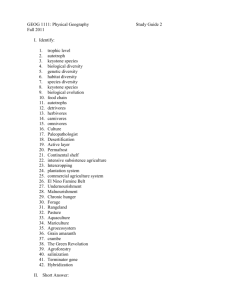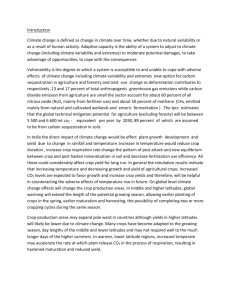Culture, Food, and Biodiversity: Shaping Crop Evolution
advertisement
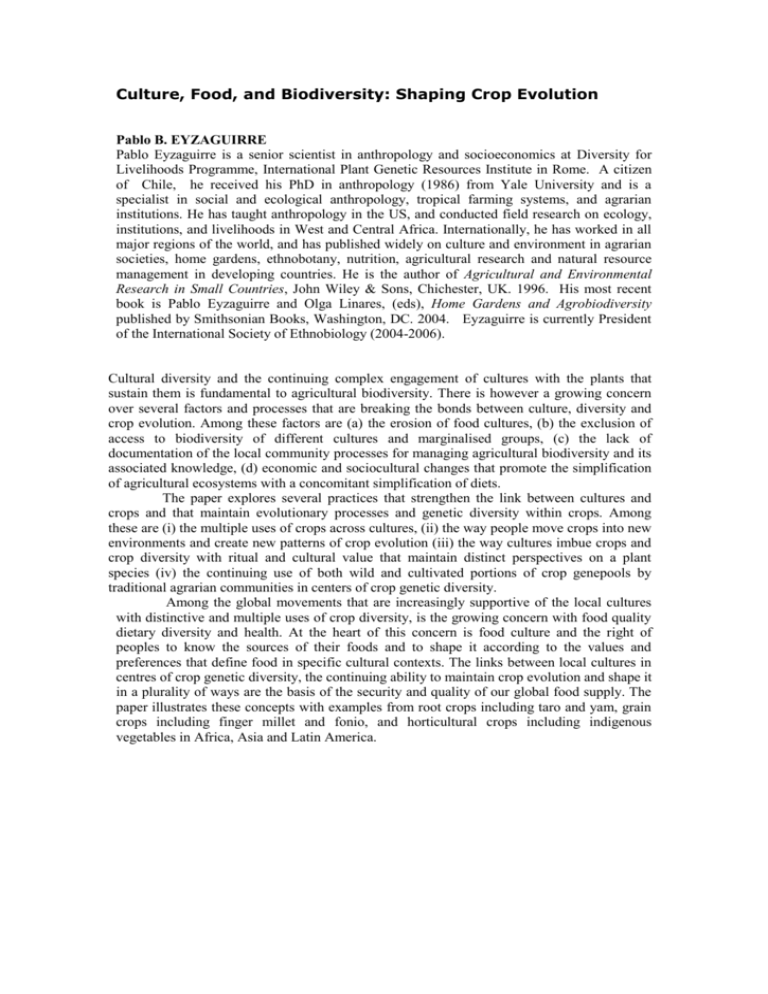
Culture, Food, and Biodiversity: Shaping Crop Evolution Pablo B. EYZAGUIRRE Pablo Eyzaguirre is a senior scientist in anthropology and socioeconomics at Diversity for Livelihoods Programme, International Plant Genetic Resources Institute in Rome. A citizen of Chile, he received his PhD in anthropology (1986) from Yale University and is a specialist in social and ecological anthropology, tropical farming systems, and agrarian institutions. He has taught anthropology in the US, and conducted field research on ecology, institutions, and livelihoods in West and Central Africa. Internationally, he has worked in all major regions of the world, and has published widely on culture and environment in agrarian societies, home gardens, ethnobotany, nutrition, agricultural research and natural resource management in developing countries. He is the author of Agricultural and Environmental Research in Small Countries, John Wiley & Sons, Chichester, UK. 1996. His most recent book is Pablo Eyzaguirre and Olga Linares, (eds), Home Gardens and Agrobiodiversity published by Smithsonian Books, Washington, DC. 2004. Eyzaguirre is currently President of the International Society of Ethnobiology (2004-2006). Cultural diversity and the continuing complex engagement of cultures with the plants that sustain them is fundamental to agricultural biodiversity. There is however a growing concern over several factors and processes that are breaking the bonds between culture, diversity and crop evolution. Among these factors are (a) the erosion of food cultures, (b) the exclusion of access to biodiversity of different cultures and marginalised groups, (c) the lack of documentation of the local community processes for managing agricultural biodiversity and its associated knowledge, (d) economic and sociocultural changes that promote the simplification of agricultural ecosystems with a concomitant simplification of diets. The paper explores several practices that strengthen the link between cultures and crops and that maintain evolutionary processes and genetic diversity within crops. Among these are (i) the multiple uses of crops across cultures, (ii) the way people move crops into new environments and create new patterns of crop evolution (iii) the way cultures imbue crops and crop diversity with ritual and cultural value that maintain distinct perspectives on a plant species (iv) the continuing use of both wild and cultivated portions of crop genepools by traditional agrarian communities in centers of crop genetic diversity. Among the global movements that are increasingly supportive of the local cultures with distinctive and multiple uses of crop diversity, is the growing concern with food quality dietary diversity and health. At the heart of this concern is food culture and the right of peoples to know the sources of their foods and to shape it according to the values and preferences that define food in specific cultural contexts. The links between local cultures in centres of crop genetic diversity, the continuing ability to maintain crop evolution and shape it in a plurality of ways are the basis of the security and quality of our global food supply. The paper illustrates these concepts with examples from root crops including taro and yam, grain crops including finger millet and fonio, and horticultural crops including indigenous vegetables in Africa, Asia and Latin America.


